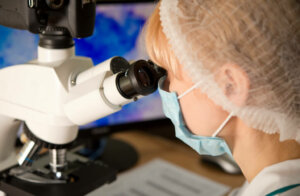Diagnosing Chlamydia: All You Need to Know

Chlamydia is a sexually transmitted disease (STD) caused by the bacteria Chlamydia trachomatis. It’s the fourth most prevalent STD in the United States, according to reports from the Centers for Disease Control and Prevention (CDC). Diagnosing chlamydia is relatively straightforward and is the first step in treating the condition.
Unlike several diseases in its group, chlamydia can be cured. To do so, it’s important to make an early diagnosis, as it isn’t uncommon for some untreated cases to lead to infertility (as evidence has shown). Today we’ll look at the protocols to detect it and what you can expect from the available tests.
Laboratory tests for diagnosing chlamydia

The first thing we should tell you is that most people infected with the disease are asymptomatic.
CDC’s general rule is to get tested annually if you are sexually active, under 25 years of age, or don’t use any method of protection. If you’re part of these risk groups, you should familiarize yourself with the chlamydia diagnostic protocol.
This can vary, depending on the patient. The evidence indicates that the most accurate method is to use nucleic acid amplification tests. Let’s have a look at the methods available to do this:
Diagnosis of chlamydia in women
Vaginal or endocervical swabs and urine tests are generally used. Studies suggest that the effectiveness of the two tests is nearly identical, so they’re safe, fast, and minimally invasive options for diagnosing chlamydia in women.
In the first case, the specialist uses a speculum to gain access to the cervix and thus obtain a sample with the help of a swab.
This is sent to a laboratory and tested for signs of infection. Even though there’s evidence that auto-swabbing can be as effective as expert swabbing, expert mediation is suggested for safer sampling.
The urine test will be done by collecting the first urination of the day and will also go to the laboratory for analysis. Depending on the patient’s habits, the specialist may suggest an oropharyngeal or rectal swab as a complement. Research suggests that the latter shouldn’t be omitted in order to rule out infection in women.
Diagnosing chlamydia in men
Urine tests are carried out with the first urination of the day, and they’re complemented with a swab of the head of the penis (glans). Both tests are analyzed in a laboratory in search of patterns that can diagnose of chlamydia.
As a complement, the specialist may suggest performing an oropharyngeal or anal swab. Although traditionally this procedure is common for men who have sex with men, in reality it can be useful in all cases. Remember that the infection can be transmitted by any practice of oral sex.
If the bacteria have caused trachoma, the diagnosis is different. Studies indicate that the protocol is a physical examination of the affected area (the eyes), including the eyelashes, cornea, and eyelids.
Bacterial samples of these will then be sent to the laboratory for further analysis. Rapid diagnostic tests (PDR) are not suggested in any of the cases, as some indications suggest low sensitivity for detection.
Differential diagnostics

If you have developed symptoms, you’ll notice that these are very unclear. Discharges from the genitals, pain during urination, pain when having sex, or pressure in the lower part can be associated with multiple conditions. Among the most common we can highlight the following:
- Gonorrhea: Gonorrhea is an STD caused by the bacteria Neisseria gonorrhoeae. Its symptoms also include painful urination and abnormal secretions from the vagina and penis.
- Bacterial vaginosis: This produces vaginal inflammation, abnormal secretions, and a bad smell. It develops due to an imbalance of anaerobic bacteria in the vagina.
- Vaginal yeast infection: causes burning, discharge, and rashes.
- Syphilis: Syphilis is caused by the bacteria Treponema pallidum. It’s characterized among other things by the appearance of sores on the genitals (in its first stage).
These are just a few examples of diseases that can be detected when diagnosing chlamydia. Awareness is part of prevention, so you should avoid having sex without a condom and being with multiple partners.
Try to perform annual tests to assess your health and thus attack the infection before it creates complications.
Since we know that patients can be reinfected, you should also keep this protocol in mind even if you have completed treatment, or years have passed since you contracted it. Don’t trust only the symptoms; the only way to detect it 100% is through the suggested methods.
Chlamydia is a sexually transmitted disease (STD) caused by the bacteria Chlamydia trachomatis. It’s the fourth most prevalent STD in the United States, according to reports from the Centers for Disease Control and Prevention (CDC). Diagnosing chlamydia is relatively straightforward and is the first step in treating the condition.
Unlike several diseases in its group, chlamydia can be cured. To do so, it’s important to make an early diagnosis, as it isn’t uncommon for some untreated cases to lead to infertility (as evidence has shown). Today we’ll look at the protocols to detect it and what you can expect from the available tests.
Laboratory tests for diagnosing chlamydia

The first thing we should tell you is that most people infected with the disease are asymptomatic.
CDC’s general rule is to get tested annually if you are sexually active, under 25 years of age, or don’t use any method of protection. If you’re part of these risk groups, you should familiarize yourself with the chlamydia diagnostic protocol.
This can vary, depending on the patient. The evidence indicates that the most accurate method is to use nucleic acid amplification tests. Let’s have a look at the methods available to do this:
Diagnosis of chlamydia in women
Vaginal or endocervical swabs and urine tests are generally used. Studies suggest that the effectiveness of the two tests is nearly identical, so they’re safe, fast, and minimally invasive options for diagnosing chlamydia in women.
In the first case, the specialist uses a speculum to gain access to the cervix and thus obtain a sample with the help of a swab.
This is sent to a laboratory and tested for signs of infection. Even though there’s evidence that auto-swabbing can be as effective as expert swabbing, expert mediation is suggested for safer sampling.
The urine test will be done by collecting the first urination of the day and will also go to the laboratory for analysis. Depending on the patient’s habits, the specialist may suggest an oropharyngeal or rectal swab as a complement. Research suggests that the latter shouldn’t be omitted in order to rule out infection in women.
Diagnosing chlamydia in men
Urine tests are carried out with the first urination of the day, and they’re complemented with a swab of the head of the penis (glans). Both tests are analyzed in a laboratory in search of patterns that can diagnose of chlamydia.
As a complement, the specialist may suggest performing an oropharyngeal or anal swab. Although traditionally this procedure is common for men who have sex with men, in reality it can be useful in all cases. Remember that the infection can be transmitted by any practice of oral sex.
If the bacteria have caused trachoma, the diagnosis is different. Studies indicate that the protocol is a physical examination of the affected area (the eyes), including the eyelashes, cornea, and eyelids.
Bacterial samples of these will then be sent to the laboratory for further analysis. Rapid diagnostic tests (PDR) are not suggested in any of the cases, as some indications suggest low sensitivity for detection.
Differential diagnostics

If you have developed symptoms, you’ll notice that these are very unclear. Discharges from the genitals, pain during urination, pain when having sex, or pressure in the lower part can be associated with multiple conditions. Among the most common we can highlight the following:
- Gonorrhea: Gonorrhea is an STD caused by the bacteria Neisseria gonorrhoeae. Its symptoms also include painful urination and abnormal secretions from the vagina and penis.
- Bacterial vaginosis: This produces vaginal inflammation, abnormal secretions, and a bad smell. It develops due to an imbalance of anaerobic bacteria in the vagina.
- Vaginal yeast infection: causes burning, discharge, and rashes.
- Syphilis: Syphilis is caused by the bacteria Treponema pallidum. It’s characterized among other things by the appearance of sores on the genitals (in its first stage).
These are just a few examples of diseases that can be detected when diagnosing chlamydia. Awareness is part of prevention, so you should avoid having sex without a condom and being with multiple partners.
Try to perform annual tests to assess your health and thus attack the infection before it creates complications.
Since we know that patients can be reinfected, you should also keep this protocol in mind even if you have completed treatment, or years have passed since you contracted it. Don’t trust only the symptoms; the only way to detect it 100% is through the suggested methods.
- Alexander, S., Ison, C., Parry, J., Llewellyn, C., Wayal, S., Richardson, D., … & Fisher, M. Self-taken pharyngeal and rectal swabs are appropriate for the detection of Chlamydia trachomatis and Neisseria gonorrhoeae in asymptomatic men who have sex with men. Sexually transmitted infections. 2008; 84(6): 488-492.
- Cook, R. L., Hutchison, S. L., Østergaard, L., Braithwaite, R. S., & Ness, R. B. Systematic review: noninvasive testing for Chlamydia trachomatis and Neisseria gonorrhoeae. Annals of internal medicine. 2005; 142(11): 914-925.
- Lunny, C., Taylor, D., Hoang, L., Wong, T., Gilbert, M., Lester, R., … & Ogilvie, G. Self-collected versus clinician-collected sampling for chlamydia and gonorrhea screening: a systemic review and meta-analysis. PloS one. 2015; 10(7): e0132776.
- Mania-Pramanik, J., Kerkar, S., Sonawane, S., Mehta, P., & Salvi, V. Current Chlamydia trachomatis infection, a major cause of infertility. Journal of reproduction & infertility. 2012; 13(4): 204.
- Meyer, T. Diagnostic procedures to detect Chlamydia trachomatis infections. Microorganisms. 2016; 4(3): 25.
- Miller, K. E. Diagnosis and treatment of Chlamydia trachomatis infection. American family physician. 2006; 73(8): 1411-1416.
- Mishori, R., McClaskey, E. L., & WinklerPrins, V. Chlamydia trachomatis infections: screening, diagnosis, and management. American family physician. 2012; 86(12): 1127-1132.
- Sethupathi, M., Blackwell, A., & Davies, H. Rectal Chlamydia trachomatis infection in women. Is it overlooked?. International journal of STD & AIDS. 2010; 21(2): 93-95.
- Solomon, A. W., Peeling, R. W., Foster, A., & Mabey, D. C. (2004). Diagnosis and assessment of t Clinical microbiology reviews. 2004; 17(4): 982-1011.
Este texto se ofrece únicamente con propósitos informativos y no reemplaza la consulta con un profesional. Ante dudas, consulta a tu especialista.







